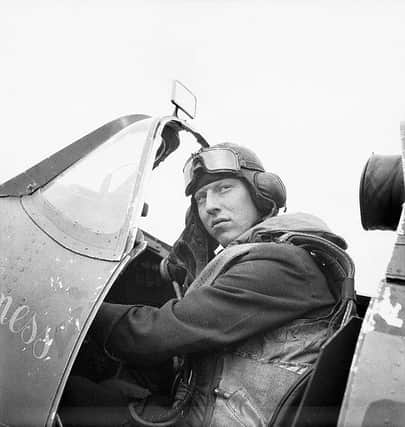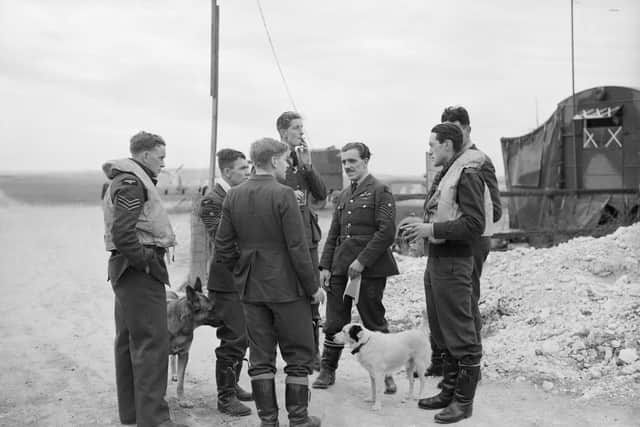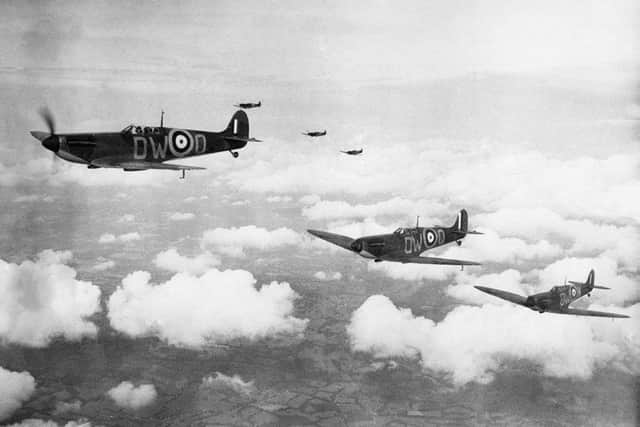The part-time pilots who became Battle of Britain heroes


The same was not true of 544 RAF aviators who gave their lives defending their country.
As the nation pauses to remember Churchill’s Few this Battle of Britain day, the story has emerged of two part-time pilots from Yorkshire who flew with the RAF in their spare-time before the war and became among the most successful in battle. Only one was to see out the war.
Advertisement
Hide AdAdvertisement
Hide AdThe Royal Auxiliary Air Force had been introduced in the 1920s by the Air Minister, Sir Samuel Hoare, and the RAF Volunteer Reserve followed in 1936, with the objective of making pilots of men with no previous flying experience. There were squadrons at Doncaster and Yeadon, where Leeds Bradford Airport now stands.


Among the recruits were James ‘Ginger’ Lacey, a trainee pharmacist in Leeds who joined the Volunteer Reserve in 1937, and John Dundas, a journalist for The Yorkshire Post who hailed from Barnsley. Both learnt to fly at weekends.
The RAF said their records, which it has republished for today’s anniversary, demonstrated the importance of having assembled a reserve of pilots in the event of war.
Sgt Lacy, originally from Wetherby, was to become one of the highest-scoring RAF fighter pilots of the battle, shooting down 19 enemy aircraft. His first kill was on July 20, 1940. By August 23, he had downed six and been awarded the Distinguished Flying Medal. He shot down six more and damaged another two in the following three weeks, and during a raid on September 13, shot down a He111 bomber which had just attacked Buckingham Palace.
Advertisement
Hide AdAdvertisement
Hide AdAfter the battle was over, he was honoured again with a Bar added to his DFM.


He later became a flying instructor near Bridlington, and died in 1989, aged 72.
Flying Officer Dundas, the great grandson of the 1st Earl of Zetland, enjoyed no such peacetime career. In mid-August, as the Luftwaffe’s raids to destroy the RAF became ever more intense, he shot down two fighters, a Stuka dive-bomber and a Dornier 17 bomber. On the last day of the Battle, before the Germans changed tack and began blitzing British cities, he shot down another Dornier 17.
On November 28, Dundas engaged Germany’s highest-scoring ace, Helmut Wick and is believed to have shot him down – but was himself killed. At 25, he was posthumously awarded a Bar to his DFC.
Advertisement
Hide AdAdvertisement
Hide AdGroup Captain Gavin Hellard, Inspector of the Royal Auxiliary Air Force, which still recruits part-time flyers, said: “These volunteer reservists represent the best of the ethos that the Royal Auxiliary Air Force still shows. They laid the foundation for today’s RAF reservists who serve with equal commitment all over the world.”
Support The Yorkshire Post and become a subscriber today.
Your subscription will help us to continue to bring quality news to the people of Yorkshire. In return, you’ll see fewer ads on site, get free access to our app and receive exclusive members-only offers.
So, please – if you can – pay for our work. Just £5 per month is the starting point. If you think that which we are trying to achieve is worth more, you can pay us what you think we are worth. By doing so, you will be investing in something that is becoming increasingly rare. Independent journalism that cares less about right and left and more about right and wrong. Journalism you can trust.
Thank you
James Mitchinson
Comment Guidelines
National World encourages reader discussion on our stories. User feedback, insights and back-and-forth exchanges add a rich layer of context to reporting. Please review our Community Guidelines before commenting.